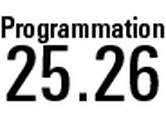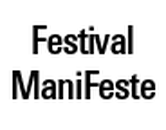10h00- 17h30
Français
Expert
Tarif étudiant : 750 €
Objectifs pédagogiques
À l’issue de la formation, les participants auront les notions théoriques et pratiques pour la conception et la réalisation en Max de systèmes interactifs sonores et musicaux, en utilisant divers capteurs de mouvements et physiologiques, ainsi que des systèmes de reconnaissance de patterns.
La programmation d’interfaces (Arduino, R-IoT) sera également abordée.
Public concerné
Compositeurs, compositrices, musiciens, musiciennes, performers, performeuses, enseignants, enseignantes, designers, designeuses
Prérequis
Bonne connaissance en traitement du signal numérique, bonne connaissance en programmation dans Max
Évaluation
Évaluation : travaux pratiques au cours de la formation.
Remise d’une attestation de fin de formation intégrant les résultats de l’évaluation.
Programme de la formation
Mercredi
| Matin | Formation théorique : aperçu des différents types de capteurs, d’interfaces, et des fournisseurs de matériel. Le cas particulier du sans fil ; Travaux pratiques : prendre en main les environnements de programmation Arduino et Energia. |
| Après-midi | Travaux pratiques : maîtriser les bases de la programmation dans Arduino et Energia, premiers exemples simples de code, télé-verser du code vers les interfaces Arduino et R-IoT. |
Jeudi
| Matin | Formation théorique : introduction à Max, en particulier aux objets et librairies permettant l’interfaçage avec Arduino et R-Iot et l’apprentissage/reconnaissance automatique de patterns à partir des données acquises ; Travaux pratiques : faire communiquer Max avec les interfaces Arduino et R-IoT. |
| Après-midi | Travaux pratiques : récupérer, traiter, router et mapper des données acquises dans un système d’apprentissage automatique et sonification réalisé en Max. |
Vendredi
| Matin | Travaux pratiques : réaliser un exemple de système de sonification : captation physiologique (battement du cœur, respiration) via des capteurs reliés à l’interface R-IoT, récupération des données et sonification dans Max. |
| Après-midi | Formation théorique : description technique d’exemples d’utilisation avancée de la captation de mouvement et de la reconnaissance du geste dans des projets de sonification et d’art performatif. |


